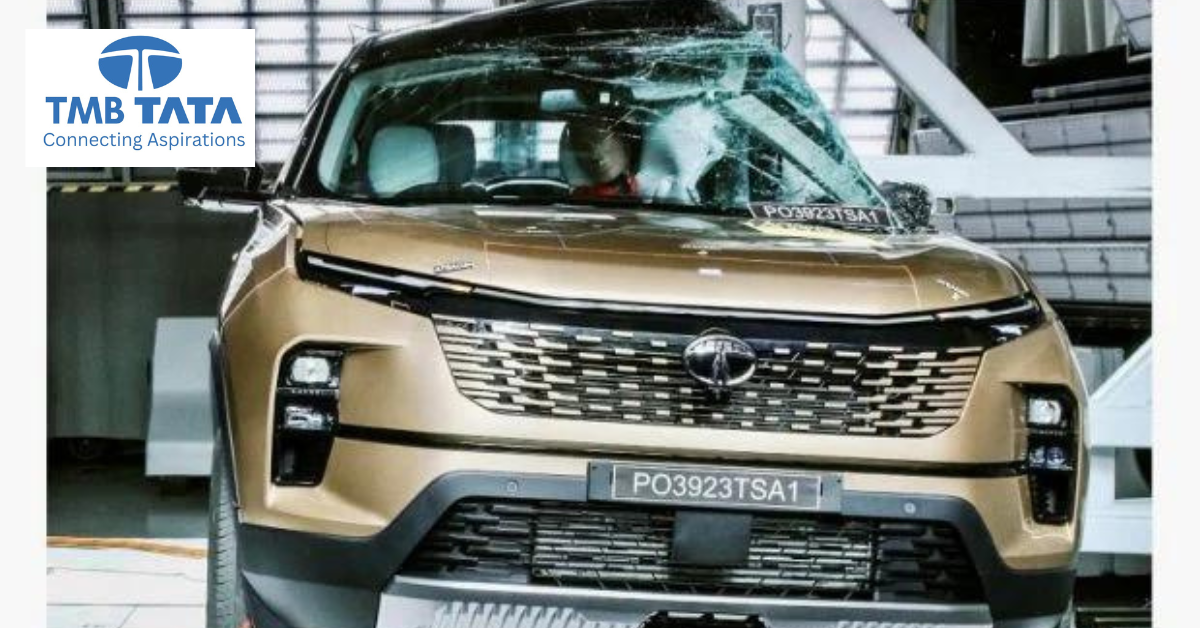
If you're considering buying a new car in India, you'll be pleasantly surprised by the recent evolution of safety features. Gone are the days when basic safety features were an afterthought.
Today, Indian car manufacturers are making impressive strides towards incorporating advanced safety updates, resulting in improved ratings from the Global NCAP (New Car Assessment Programme). This allows you to breathe easy knowing your car is packed with the latest technology to keep you and your loved ones safe on the road.
A Paradigm Safety Shift Features Wave In Indian Cars:
Remember the first time you saw the aftermath of a car accident? The experience can be deeply unsettling, highlighting the crucial role of safety features in protecting lives on the road. Thankfully, the Indian automotive landscape has undergone a remarkable transformation, placing emphasis on occupant safety like never before. This blog explores the fascinating journey of safety features in modern Indian cars, particularly focusing on the rise of Tata Motors and Mahindra & Mahindra as leading forces in this crucial area, and its impact on Global New Car Assessment Programme (NCAP) ratings. As safety features evolve, they not only safeguard lives but also influence the purchasing decisions of individuals and families, leading to a ripple effect of positive change on Indian roads.
For a significant portion of India's automotive history, prioritizing affordability often meant compromising on safety features. Basic elements like seat belts were optional add-ons for many car models, and government regulations mandating these features were largely absent. Additionally, consumer awareness regarding the importance of advanced safety features remained low, with a preference for features that enhanced aesthetics or performance over those that ensured occupant protection.
A pivotal shift began with a growing focus on safety among Indian car buyers. As disposable income increased and awareness campaigns gained traction, safety became a crucial factor influencing purchase decisions. The government also played a key role by introducing mandatory safety regulations like the inclusion of airbags and Anti-lock Braking Systems (ABS) in all new cars. Furthermore, stricter NCAP testing norms were implemented, pushing car manufacturers to prioritize safety features and invest in research and development to meet these new standards. This shift created a competitive landscape, with manufacturers like Tata Motors and Mahindra & Mahindra stepping up to the challenge by prioritizing "Safest cars in India" as a core principle in their design and engineering philosophies.
The impact of these changes is evident in the plethora of advanced safety features now available in modern Indian cars. Leading the charge are manufacturers like Tata Motors, whose commitment to safety has been reflected in their impressive NCAP ratings. Here's a closer look at the evolution of safety features:
Passive Safety Features:
Active Safety Features:
Beyond passive measures, modern Indian cars are increasingly equipped with cutting-edge active safety features that actively assist drivers in preventing accidents:
Tata Motors' commitment to safety is evident in their recent achievements. Both the Tata Harrier and Safari have received a remarkable 5-star rating from Global NCAP, highlighting their exceptional level of protection for occupants. This accomplishment signifies not only the advancements in safety features but also the dedication of manufacturers like Tata Motors to prioritize the well-being of their customers. Click the link If you are planning to book a Tata Harrier or Tata Safari test drive in Lucknow.
The evolution of safety features in Indian cars doesn't stop here. Manufacturers like Tata Motors are continually developing even more advanced technologies, pushing the boundaries of safety and setting new benchmarks
FAQ’s on Car Safety Features in India
Which Indian car has the best safety features?
The Tata Harrier currently stands out with the highest Global NCAP rating, achieving a 5-star rating for adult occupant protection. This indicates a very high level of protection for passengers in the event of a collision.
Which is the number 1 safest car in India?
Tata Harrier and Tata Safari share the title of the safest cars in India. Both have achieved the highest 5-star safety rating in the Global NCAP crash tests.
Which car is 5 Star in India?
List of cars in India with a 5-star safety rating from Global NCAP
Tata Cars:
Mahindra Cars:
Other Manufacturers:
